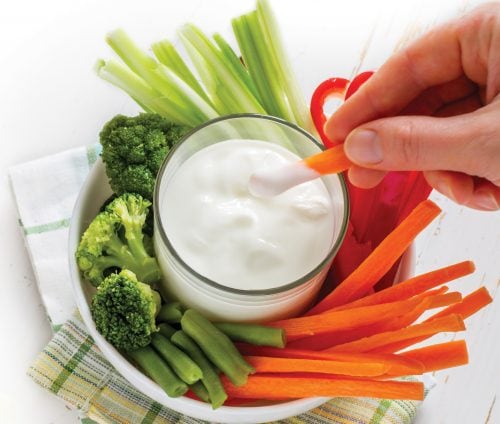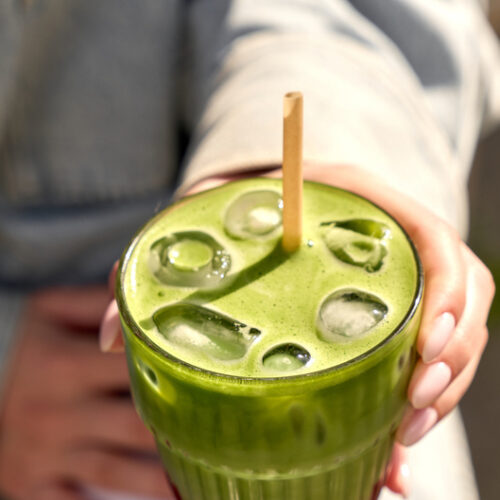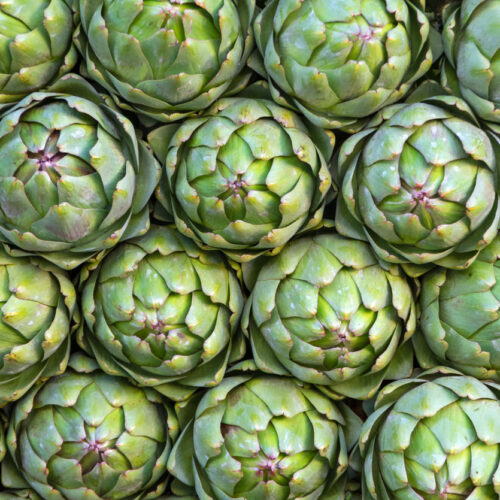
How good for you is that raw brownie? How much energy is in that protein bar? Dietitian Brooke Longfield shines a light on so-called ‘health foods’.
We’ve all seen someone digging into a bag of reduced-fat chips, oblivious to the fact they’re consuming double or even triple the recommended serving size. And many of us are familiar with the friend who shows up with a tray of ‘all-natural’ raw chocolate brownies, insisting you take two “because they’re healthy”.
Many foods promise benefits they can’t deliver for two reasons: either they have an unfounded reputation as a healthy food, or they simply don’t live up to the suggestive claims on their packaging. This ‘health-halo’ effect is detrimental because by giving you confidence in your ‘healthy’ choice, you can easily overeat — and may be doing so more often than you realise.
In reality, that ‘healthy’ food could have the kilojoules/calories — and sometimes saturated fat — of a cream-filled doughnut, so definitely need to be enjoyed as occasional treats only!
Top 10 ‘health food’ hazards
1. Protein bars and energy balls
These products target health-conscious people, but some of these dense bars and balls can be loaded with sugar and saturated fat. While some of that sugar may be in the form of dried fruit, and the fat may be from nuts and healthy oils, the bottom line is this: fat and sugar are high in kilojoules, so before you know it, you’ve blown that hour at the gym in just a few sweet bites.
- HFG tip: Look for protein bars or balls that are low in fat and sugar and high in protein and fibre and check the serving size. Remember, some packets are designed to serve two!
- Better choice: For a high-protein snack, blend a smoothie of reduced-fat milk and fruit, or munch on a small handful of raw nuts.
2. Dried fruit
You may think of dried fruit as healthy, but it pays to read the ingredient list. Some varieties contain added sugar and even oil, making them not much better than a fruit-flavoured lolly. Plus, dried fruit itself is a highly concentrated source of sugar, and therefore full of kilojoules.
- HFG tip: Bear in mind that the recommended serve of dried fruit is 20g which is equivalent to 2 tablespoons of sultanas or 6 dried apricot halves.
- Better choice: Crunch whole fresh fruit for a sweet nutrient boost, and its roughage will also help you feel full for longer.
3. Ready-made salads
It’s great to see salad and sandwich bars popping up in food courts, but watch the portions. Some large salads have more kilojoules than a Big Mac meal!
A mix of crisp green leaves and low-kilojoule veges will boost your fibre intake, but keep an eye on the other ingredients. Salads loaded with bacon, croutons, cheese and creamy dressings are heavy with kilojoules and often salt or fat, too, making them a pricey lunch for your health, whatever their cost.
- HFG tip: Choose a salad with a bed of leafy greens, then add lean chicken, eggs or tuna to keep you feeling satisfied. (Always ask for dressing on the side so you can control the amount instead of drowning your salad.)
- Better choice: Take the time to chop salad ingredients at the start of the week. Seal them in individual airtight containers and pop them in the fridge. This way, you can easily assemble two or three healthy lunches and dinners.
4. Sports drinks
Sports drinks contain added salt and sugar to help replenish reserves that the body loses by sweating during prolonged exercise sessions. But if you aren’t running a marathon or playing for the Silver Ferns or All Blacks you might not be sweating enough for your body to do anything but store the extra kilojoules in these drinks as fat. One bottle can have as much as 78g of sugar — that’s 19.5 teaspoons!
- HFG tip: Leave sports drinks on the shelf. Most of us aren’t athletes, so we don’t need them.
- Better choice: Water is all we need to stay well hydrated.
5. Vege chips
Packaged vege chips range from about 25 per cent to 30 per cent fat, an amount you can easily find in a bag of regular potato chips. Compared with these, however, some of the vege versions are seasoned with more salt.
- HFG tip: Check the ingredient list — if it names more than two or three ingredients, the chips are highly processed. Try to limit salt to fewer than 600mg sodium per 100g.
- Better choice: Make your own crunchy snacks: Spray very thin slices of veges (such as kumara and beetroot) with olive oil and roast until crisp in a hot oven.
6. Crudités and dip
It’s too easy to undo healthy behaviour such as eating crudités (raw vege sticks) with bad habits (smothering them in lashings of fatty dip). There’s no harm in dressing veges with a little olive oil or tahini if these healthy fats help to lift your vege intake, but steer clear of creamy fat-rich dips.
- HFG tip: Place a helping of crudités and dip on a side plate. This way, you know exactly how much you’ve eaten, which is much more difficult to work out when you’re dipping straight into the tub.
- Better choice: Opt for vege-based dips, such as hummus or beetroot varieties, and check that the saturated fat content is lower than 5g per 100g.
7. Frozen yoghurt
Don’t be fooled by this frozen dessert, which is really just ice cream masquerading as yoghurt. In fact, a standard cup of frozen yoghurt can contain up to 6g (1 1/2 teaspoons) more sugar than a standard cup of ice cream.
- HFG tip: Stick to a very small serve.
- Better choice: Freeze low-fat natural yoghurt into fruity ice-blocks at home.
8. Fruit muffins
This popular café choice is cake in all but name. One big fruit muffin can bulge with more than 2250kJ (539cal) — the energy load of an average piece of chocolate cake. And if you’re inclined to slather a toasted muffin with a couple of teaspoons of butter or margarine, you can bump the energy load to more than 20g of fat and 40g of sugar.
HFG tip: Save this for a special treat, or share with a friend and hold the butter!
Better choice: Spread a thin slice of raisin toast with a light layer of reduced-fat table spread or ricotta, and you’ll cut kilojoules by more than half. Alternativelytry our healthy Choc chip, banana and oat mini muffins recipe.
9. Light olive oil
On a bottle of olive oil, the words light, lite or extra-light can be misleading. In this case, it’s purely a marketing term used for highly refined oils with a mild flavour or colour, but not a reduced fat content While some people may prefer the subtle flavour of a light oil, it still contains as much fat as the regular variety.
- HFG tip: Shop smart. If you spot a promising claim on an olive oil label, look at the nutrition information panel on the back for the real story.
- Better choice: Look for extra-virgin olive oil, which experts acknowledge provides a wide range of health benefits. Also the recommended shelf life for olive oil is two years, so check the label for a ‘best before’ date that’s at least 12 months away, or a harvest date that’s within the past 12 months.
10. Organic cakes and cake mixes
Organic doesn’t mean healthy! Cake mixes may make it easier and quicker in the kitchen, but most cakes are high in sugar, so they’re not doing your waistline any favours.
- HFG tip: Save cake for an occasional treat.
- Better choice: Try some Healthy Food Guide recipes at home to enjoy a healthy spin on homemade cakes, muffins and biscuits. This also allows you to control the amount of added sugar.
www.healthyfood.com










